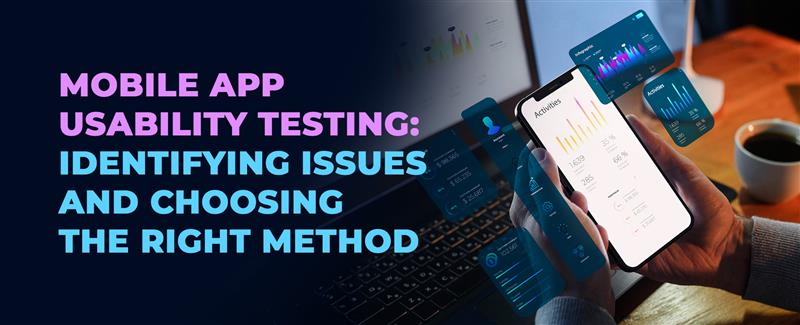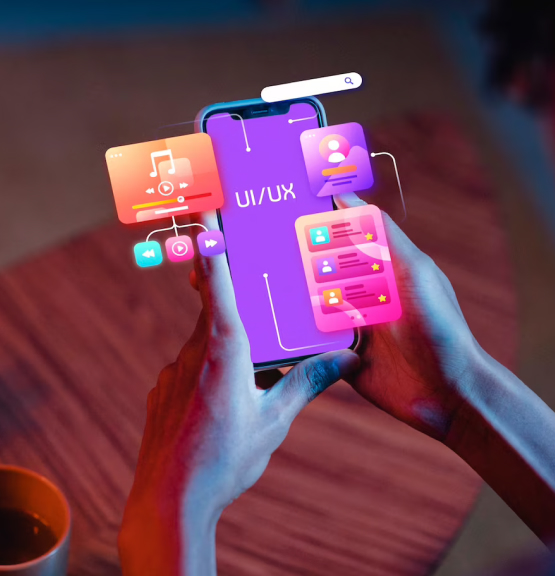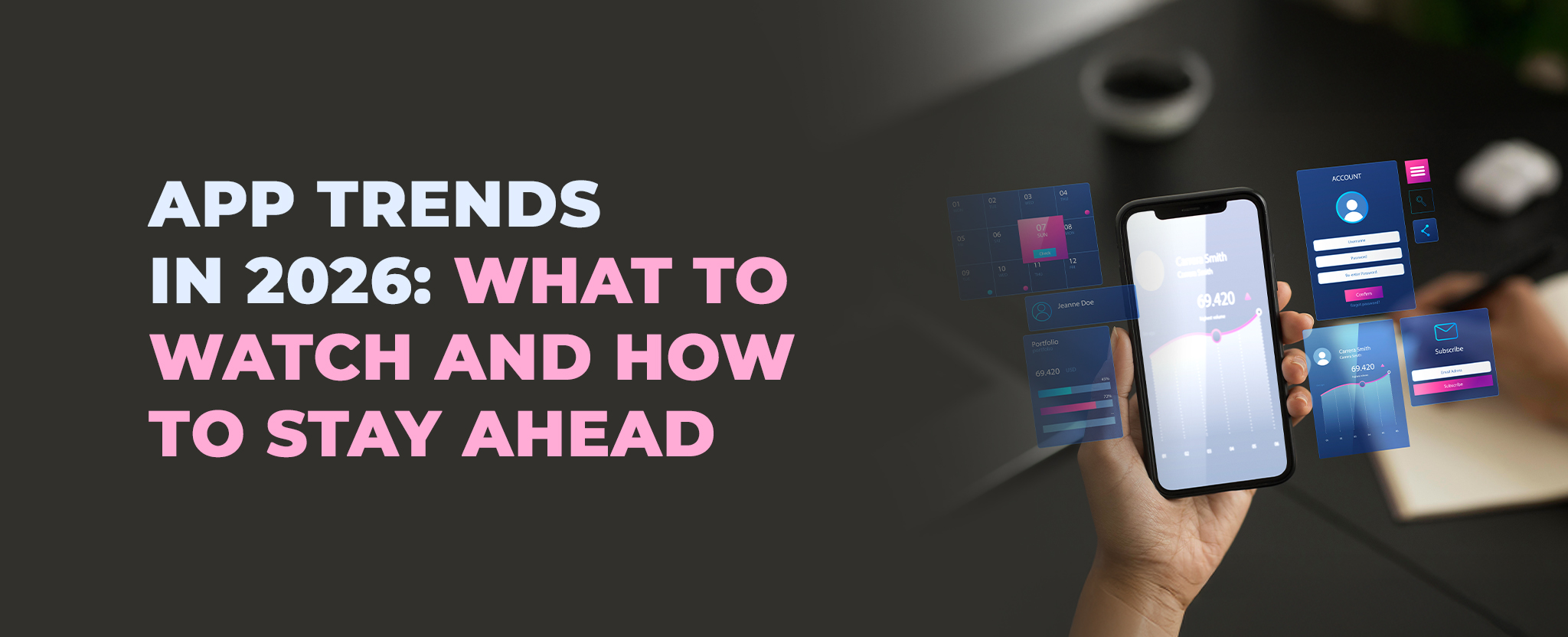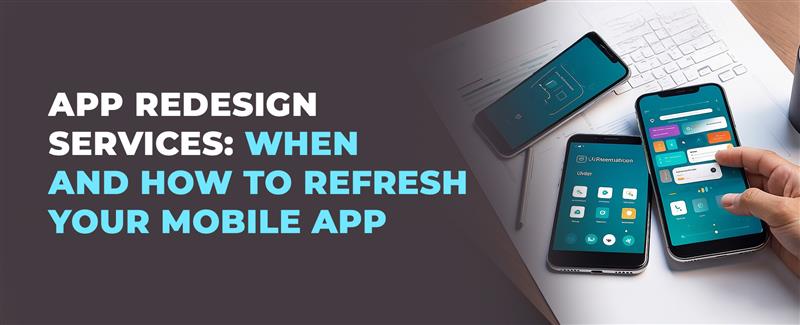Making Your Mobile App User-Friendly: A Guide to Usability Testing
25 Apr 25 


In today’s digital world, there are nearly 2 million apps on Apple’s App Store and about 2.9 million on Google Play Store. With so many choices, your app needs to be not just functional but also easy and enjoyable to use.
Mobile app usability testing is a key step to make sure users love your app. This testing helps you identify problems from the user’s perspective and improve their overall experience. Let’s explore what this testing is all about and how it can help your app succeed!
What is Mobile App Usability Testing?
Mobile app usability testing is simply the process of watching real people use your app to find problems and gather feedback. This helps you find issues that make your app hard to use, make users happier with your app, and save money by fixing problems early rather than making expensive changes later.
When you test your app with real users, you gain valuable insights that developers and designers might miss. These fresh perspectives can reveal frustrating obstacles that prevent users from fully enjoying your app.
7 Common Mobile App Usability Problems
1. Works on Some Devices But Not Others
When your app looks or works differently across various phones or tablets, users get frustrated. They might encounter broken layouts, misaligned elements, or missing features depending on their device.
To fix this problem, test on many different devices to catch visual or functional issues early. Consider using development tools like Flutter or React Native that work well across platforms. Create flexible layouts that adjust to different screen sizes, and keep your app updated to support new devices as they’re released.
2. Limited Screen Orientation
Many users have strong preferences about how they hold their phones. Some apps only work in portrait (vertical) or landscape (horizontal) mode, which limits how people can use your app and may cause them to look elsewhere.
The solution is to make your app work well in both orientations whenever possible. Use design elements that adjust automatically when the screen rotates, and thoroughly test the experience in both modes to ensure nothing breaks or becomes awkward to use.
3. Confusing First-Time Experience
First impressions matter tremendously with mobile apps. If new users don’t understand how to use your app right away, they might delete it without giving it a real chance.
To create a better onboarding experience, break down instructions into simple steps that don’t overwhelm new users. Use visuals like arrows or gentle animations to guide them through key features. Include a “Skip” button for those who prefer to explore on their own, and make tutorials available for later review if users need a refresher.
4. Hard-to-Navigate Design
A confusing navigation system is one of the quickest ways to lose users. When people can’t find what they’re looking for, their frustration builds rapidly.
Make navigation intuitive by using standard buttons and icons people already recognize from other apps. Keep your menu structure shallow rather than forcing users through multiple layers to find what they need. Adding a search bar can help users quickly locate specific features without hunting through menus.
5. Buttons That Don’t Seem to Work
Nothing is more frustrating than tapping a button and getting no response. Users will quickly question if something is wrong with the app or their device.
Ensure buttons are large enough for easy tapping—experts recommend at least 44×44 pixels. Add visual feedback like color changes or subtle animations when buttons are pressed. Make your app responsive so there’s minimal delay between tapping and seeing results. Test all interactive elements across different devices to ensure consistent behavior.
6. Long, Complicated Forms
Users hate filling out lengthy forms, especially on small screens. Each additional field increases the chance that users will abandon the process entirely.
Keep forms as short as possible, asking only for essential information. If a longer form is necessary, split it into logical steps that feel more manageable. Show validation errors immediately so users can fix mistakes without submitting the entire form. Consider using dropdown menus and auto-fill options to reduce typing, and allow users to save their progress if they need to complete the form later.
7. No Progress Indicators
When users take an action in your app but receive no feedback, they’re left wondering if anything happened at all. This uncertainty creates a poor experience.
Always show loading indicators when processes are running in the background. Use clear error messages that explain what went wrong and how to fix it. Incorporate visual cues like checkmarks or success messages to confirm when actions complete successfully. These small additions significantly improve the feeling of reliability.
You may also check Ultimate Mobile App Testing Checklist 2025
How to Test Your App’s Usability
- Create a Testing Plan
- Set clear goals and objectives for what you want to learn
- Choose appropriate testing methods based on your needs
- Prepare a script with tasks for users to complete
- Decide on key metrics to measure success
- Find the Right Testers
- Recruit participants who match your target audience
- Aim for 5-8 testers per round (enough to spot common issues)
- Consider using recruitment tools or your existing customer base
- Offer incentives to encourage participation
- Set Up Testing Sessions
- Schedule convenient times for your participants
- Prepare testing equipment (devices, recording tools)
- Create a comfortable environment for honest feedback
- Test your setup before the first participant arrives
- Run the Tests
- Ask users to complete specific tasks while thinking aloud
- Observe where they struggle or get confused
- Take notes on their behavior and comments
- Avoid leading questions or helping too quickly
- Test under different conditions (Wi-Fi vs. mobile data)
- Document What You Learn
- Compile all feedback and observations
- Look for patterns across multiple users
- Prioritize issues based on frequency and severity
- Create a report with clear recommendations
- Share findings with your development team
Popular Testing Methods for Mobile Apps
There are several effective ways to test your app’s usability, each with different advantages:
➡️Guerilla testing involves approaching people in public places like coffee shops and asking them to try your app briefly. This method is great for getting quick, honest feedback with minimal cost. All you need is a device with your app and a way to take notes.
➡️Card sorting helps you understand how users would naturally organize your app’s features or content. By having users group and label items in ways that make sense to them, you can create a more intuitive information architecture.
➡️Tree testing examines the effectiveness of your navigation structure without the distraction of visual design. Users try to find specific items within a text-only version of your navigation menu, revealing whether your categories and labels make sense.
➡️Heatmap testing uses software to track where users tap, swipe, and focus their attention on your screens. The resulting visualizations show you which elements attract attention and which get ignored, helping you optimize your layout.
➡️Session recording allows you to watch how real users interact with your app in their natural environment. These recordings can reveal unexpected usage patterns and problems that wouldn’t appear in controlled testing scenarios.
Conclusion
Regular usability testing helps ensure your app provides a smooth, enjoyable experience for users. By identifying and fixing common problems, you can create an app that stands out in today’s crowded marketplace.
The most successful apps continuously improve based on user feedback and behavior. Simple changes can often make dramatic differences in user satisfaction and retention.
Are you looking for mobile or website testing services? Our team of experts at Mindster can evaluate your mobile user experience and provide detailed recommendations tailored to your needs.
Mindster specializes in comprehensive product development including UX Research, Product Design, and Development across various digital platforms. We help businesses create digital products that users love to use.
- Agentic AI1
- Android Development3
- Artificial Intelligence35
- Classified App3
- Custom App Development5
- Digital Transformation12
- Doctor Appointment Booking App14
- Dropshipping1
- Ecommerce Apps40
- Education Apps2
- Fintech-Apps37
- Fitness App4
- Flutter4
- Flutter Apps20
- Food Delivery App5
- Grocery App Development1
- Grocery Apps3
- Health Care10
- IoT2
- Loyalty Programs9
- Matrimony Apps1
- Microsoft1
- Mobile App Maintenance2
- Mobile Apps130
- Product Engineering6
- Progressive Web Apps1
- React Native Apps2
- Saas Application2
- Shopify9
- Software Development3
- Taxi Booking Apps7
- Truck Booking App5
- UI UX Design8
- Uncategorized6
- Web App Development1



















Comments